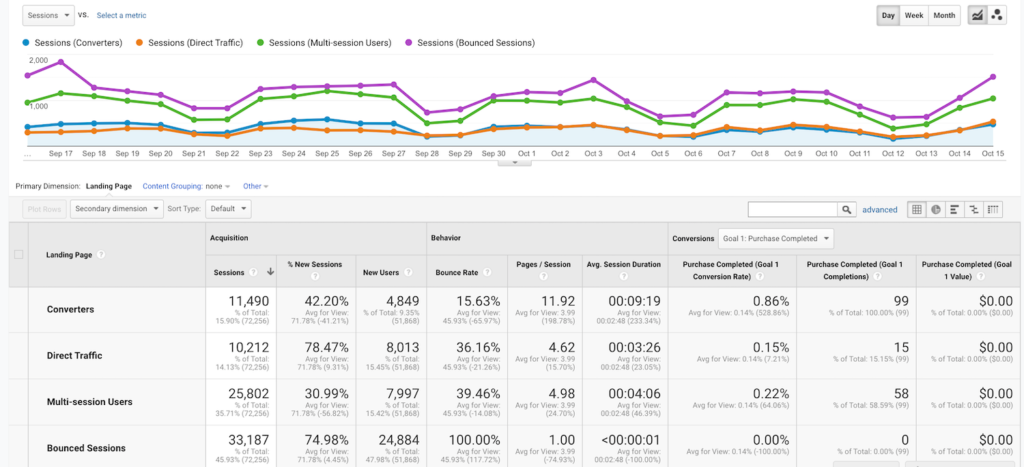Unveiling the Blind Attractions: Understanding What Google Analytics Goals Can not Measure
In the realm of electronic analytics, Google Analytics stands as an effective tool for tracking and analyzing on-line individual communications. Recognizing what Google Analytics goals can not measure is important for gaining a comprehensive sight of user habits and interaction.
User Actions on External Operatings Systems
Understanding just how users connect on outside platforms is critical for enhancing online methods. External platforms, such as social media sites networks, recommendation web sites, and on the internet discussion forums, play a considerable role in driving website traffic to a company's internet site. By evaluating customer behavior on these platforms, companies can obtain important understandings right into the efficiency of their advertising and marketing efforts and the choices of their target market.
One secret element of user behavior on outside platforms is the referral resource. By tracking where the customers are coming from, services can identify which systems are driving one of the most traffic to their website. This info can aid companies allocate their sources better, concentrating on the platforms that yield the very best outcomes.

Offline Interactions and conversions
Evaluating individual habits on outside platforms provides important insights into online strategies; however, considering offline conversions and interactions is equally vital for a detailed understanding of a business's general performance. While Google Analytics succeeds at tracking on the internet communications, it falls short in recording the full client journey that frequently consists of offline touchpoints. Offline conversions, such as in-store purchases or phone inquiries, play a significant duty in lots of organizations' success. Neglecting these communications can lead to an altered sight of the performance of marketing campaigns and total service performance.

Attribution Beyond Last Click
When delving into the world of electronic marketing analytics, it ends up being necessary to look beyond the solitary touchpoint of the last click for an extra comprehensive understanding of attribution. While Google Analytics offers useful insights into individual habits, counting only on last-click acknowledgment can be limiting - what data is google analytics goals unable to track. Attribution models that go past the last click supply an extra nuanced sight of the customer journey, taking right into account all the touchpoints that result in a conversion
Acknowledgment past the last click enables marketing experts to appoint credit to different interactions along the conversion path, offering a more clear image of the efficiency of different marketing channels. By this contact form discovering multi-touch acknowledgment designs such as linear, time decay, or position-based acknowledgment, businesses can better allot their advertising and marketing budget plans and enhance their strategies for optimal effect.
Recognizing the impact of each touchpoint in the conversion process is essential for making informed choices and taking full advantage of ROI. By embracing acknowledgment past the last click, organizations can get deeper understandings into consumer habits and customize their advertising and marketing initiatives better.
Cross-Device and Cross-Browser Monitoring

Likewise, cross-browser tracking enhances cross-device monitoring by capturing user habits as they switch over in between various internet browsers. Recognizing just how individuals connect with websites on different browsers can assist marketers optimize their on the internet experiences to make certain uniformity and functionality across various systems.
Qualitative Information and Individual Intent
Recognizing customer intent via qualitative information evaluation is important for creating targeted electronic advertising methods that reverberate with the requirements and preferences of the target audience. Qualitative information gives understandings right into the 'why' behind individual actions, clarifying motivations, emotions, and choices that quantitative data alone can not record. By analyzing customer responses, comments, and interactions, online marketers can uncover important information about customer intent, enabling them to tailor their messaging, content, and offerings to much better straighten with what their target market is looking for.
Qualitative data also see this page helps in recognizing the context Click This Link in which individuals engage with a website or application. This contextual understanding makes it possible for marketing professionals to produce more tailored and appropriate experiences, inevitably driving higher interaction and conversion rates. By diving right into user intent via qualitative data evaluation, services can obtain a deeper understanding of their target market, causing more reliable marketing approaches that satisfy customers' expectations and requirements.
Conclusion
In final thought, Google Analytics goals have restrictions in gauging individual behavior on outside systems, offline conversions, attribution past last click, cross-browser and cross-device tracking, and qualitative data connected to individual intent. what data is google analytics goals unable to track. It is essential for organizations to be knowledgeable about these blind spots in order to supplement their information analysis with various other devices and methods to get a more detailed understanding of their target market and improve their general electronic marketing techniques
By analyzing individual behavior on these platforms, services can obtain valuable insights right into the performance of their marketing efforts and the choices of their target audience.
Assessing user habits on outside systems gives valuable insights into on-line approaches; however, thinking about offline conversions and interactions is similarly important for a detailed understanding of a firm's total performance.In electronic marketing analytics, moving beyond last-click attribution to check out cross-device and cross-browser monitoring is essential for gaining a holistic understanding of user interactions across numerous systems and tools. By examining individual comments, comments, and interactions, marketing professionals can reveal useful info regarding customer intent, permitting them to customize their messaging, material, and offerings to better align with what their target market is looking for.
By delving into user intent through qualitative information evaluation, services can get a deeper understanding of their target audience, leading to more reliable advertising and marketing techniques that meet customers' expectations and demands.